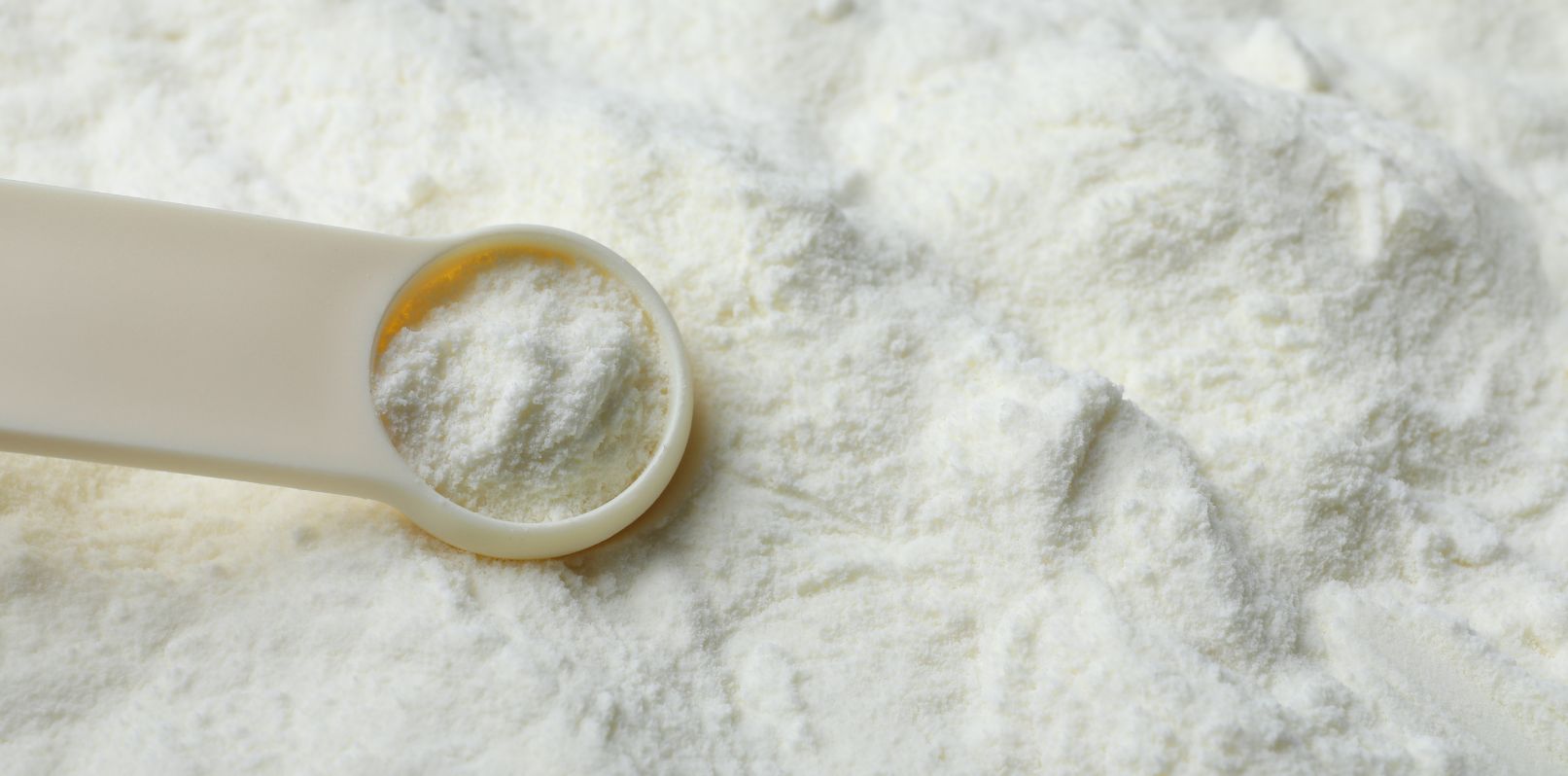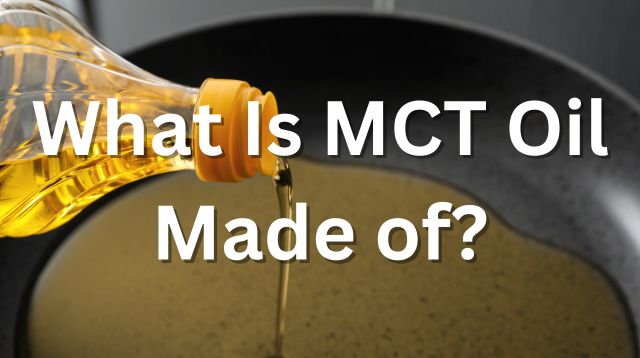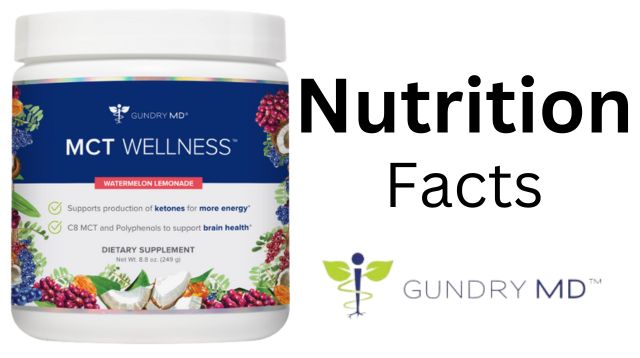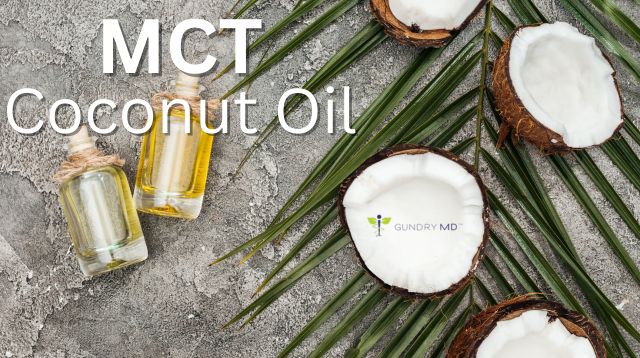MCT Powder: What Is It, How Is It Made, and How To Use It

What Is MCT Powder?
MCT powder is a dietary supplement that’s derived from MCT oil. MCTs (medium-chain triglycerides) have smaller molecules than most oils and are quickly absorbed into the bloodstream. They have shown an array of potential health benefits, so incorporating MCT oil into a balanced diet may help support overall health.1
Creating MCT powder involves a process known as spray drying, where MCT oil is combined with a carrier powder, such as acacia fiber, and converted into a solid, powdered form.2 This process allows for easy mixing into smoothies, beverages, and recipes, making it a convenient option for incorporating MCTs into your daily routine.
MCT powder is versatile and convenient, however, it’s important to choose a high-quality MCT powder from a provider that you trust.

What Are The Potential Benefits Of Using MCT Powder?
The potential benefits of MCT powder are exactly the same as those of MCT oil. In fact, they may even be better. This is because MCT powder often has additional powerful ingredients added which may come with extra health benefits.
These potential benefits include:
- Helping With Weight Management
- Supporting Energy and Focus
- Supporting Healthy Blood Sugar Levels
- Supporting Brain Function3-9
How Is MCT Powder Made?
As a powdered form of MCT oil, MCT powder is created by mixing MCT oil with a carrier substance and then converting the mixture into a solid powder form. Let’s take a better look:
- A carrier substance, usually a starch or a protein, such as acacia fiber, is added to the MCT oil. The purpose of the carrier substance is so the MCT oil can bind to something to be converted into a solid, powdered form.
- The mixture is then subjected to a spray drying process. Spray drying involves using specialized industrial equipment to convert the liquid MCT oil mixture into a powder form. The mixture is sprayed into a chamber where it is exposed to hot air, causing the liquid to evaporate and leaving behind fine particles of MCT powder.
- The end result is a powdered form of MCT oil that retains all the potential benefits of MCT oil but is more convenient to use. MCT powder is portable, easy to mix into smoothies and other beverages, and can also be used in baking recipes.10
Different Types Of MCT Powders
MCT C8 Vs C10
MCT powder can sometimes differ by the MCT ratios of the oil used – that is, the ratio of caprylic acid (C8) to capric acid (C10).
- Caprylic acid C8: Is seen as the most efficient MCT fatty acid due to its 8-carbon length
- Capric Acid C10: C10 is still readily absorbed, but as a ten-carbon acid, it’s a little slower. Generally speaking, the shorter the chain, the faster the absorption rate.11
Flavored MCT Powders
Flavored MCT powders offer a delicious and convenient way to incorporate MCTs (medium-chain triglycerides) into your diet. These can provide:
- Enhanced Taste: Flavored MCT powders are designed to provide a pleasant and enjoyable taste experience. These flavors can add a hint of sweetness and richness to your favorite beverages and recipes or just make water more enjoyable.
- Easy to Use: Just like unflavored MCT powders, flavored MCT powders are incredibly easy to use. You simply mix a scoop of the powder with a preferred beverage, such as coffee, tea, smoothies, shakes, or even water. The powder blends seamlessly, creating a creamy texture with a burst of flavor.
- Versatile: Flavored MCT powders can be added to your morning coffee or tea to make a delicious and creamy (often keto-friendly) creamer. They can also be used to enhance the flavor of your smoothies, turning them into a tasty and nutritious treat. Additionally, flavored MCT powders can be incorporated into recipes like pancakes, cookies, and other lectin-free baked goods, providing a boost of MCTs without altering the texture of the final product.
- Benefits of MCTs: Flavored MCT powders offer all the potential benefits of plain MCT powder or MCT oil. However, if the flavored MCT powder has additional potent ingredients added – like antioxidants or bioflavonoids – it may offer even more health support.12,13

How To Use MCT Powder
- Start with a small dosage: When first starting with MCT powder, it’s recommended to begin with a small dosage and gradually increase it over time. This allows your body to adjust to the supplement. Start with half the recommended dosage and gradually work your way up to the recommended amount.14
- Mix it with your favorite beverage: MCT powder can be easily incorporated into your daily routine by mixing it with your favorite beverage. It dissolves well in both hot and cold liquids. You might also consider adding it to your morning coffee, smoothies, or just plain water for a quick and convenient boost of energy.
- Timing of consumption: Drink just one glass a day on a consistent basis. Some people use it as an afternoon pick-me-up. MCT powder digests easily, so you can take it with or without a meal.
FAQs
How Is MCT Powder Different From Coconut Oil?
MCT oil is originally derived from coconut oil. However, there are notable differences between the two. MCT powder is a convenient alternative to MCT oil, especially when it comes to portability and ease of use. Here are the key points to consider when comparing MCT powder to coconut oil:
Coconut Oil:
- Coconut oil contains all 4 MCTs, plus a small amount of LCTs (long-chain triglycerides).
- It’s about 47% lauric acid (C12), with smaller amounts of C6, C8, and C10.
- It contains trace amounts of monounsaturated and polyunsaturated fats.
- Although it’s technically an MCT, lauric acid behaves like an LCT in terms of digestion, so coconut oil does not have the same potential benefits as MCT oil.15,16
MCT Oil or Powder:
- MCT oil contains quick-absorbing caprylic acid (C8) and, often, capric acid (C10).
- The other two MCTs found in basic coconut oil – lauric acid (C12) and caproic acid (C6) – are usually removed, or used in small quantities, to enhance the quality and effectiveness of MCT oil.17

Are Some MCT Powders Better Than Others?
Various types of MCT powders are available, and some are considered superior to others due to factors such as source, purity, and additional ingredients. When comparing MCT powders, it’s important to consider the following key factors:
- Source: Look for MCT powders that are made from 100% coconut oil. Avoid powders that contain palm oil.18
- Purity: Choose MCT powders that only contain caprylic acid (C8) and/or capric acid (C10). These are the most potentially beneficial MCTs.19
- Additional Ingredients: Check the ingredient list carefully, and avoid MCT powders that contain fillers, like maltodextrin-based carriers. Instead, look for powders that use natural, fiber-based carriers, like acacia fiber. Additionally, MCT powders that use natural flavors are always a good choice.20
Sources
- https://www.health.harvard.edu/blog/is-there-a-place-for-coconut-oil-in-a-healthy-diet-2019011415764
- https://aapharmachem.com/mct-oil-and-oil-powder/
- https://pubmed.ncbi.nlm.nih.gov/2021124/
- https://www.sciencedirect.com/science/article/abs/pii/S0031938420305667
- https://www.ncbi.nlm.nih.gov/pmc/articles/PMC4669977/
- https://pubmed.ncbi.nlm.nih.gov/1568535/
- https://alz-journals.onlinelibrary.wiley.com/doi/abs/10.1002/alz.055702
- https://pubmed.ncbi.nlm.nih.gov/33220329/
- https://www.frontiersin.org/articles/10.3389/fneur.2023.1123290/full
- https://aapharmachem.com/mct-oil-and-oil-powder/
- https://pubmed.ncbi.nlm.nih.gov/11755040/#:~:text=Firstly%2C%20fatty%2Dacid%20chain%20length,than%20long%2Dchain%20fatty%20acids
- https://aapharmachem.com/mct-oil-and-oil-powder/
- https://www.verywellfit.com/what-are-the-benefits-of-antioxidants-2507083
- https://www.healthline.com/nutrition/mct-oil-101#safety-and-side-effects
- https://www.hsph.harvard.edu/nutritionsource/food-features/coconut-oil/
- https://academic.oup.com/nutritionreviews/article/74/4/267/1807413
- https://www.healthline.com/nutrition/mct-oil-101#mct-oil
- https://www.wwf.org.uk/updates/8-things-know-about-palm-oil
- https://www.healthline.com/nutrition/mct-oil-101#mct-oil
- https://www.ncbi.nlm.nih.gov/pmc/articles/PMC6657709/
Related posts


